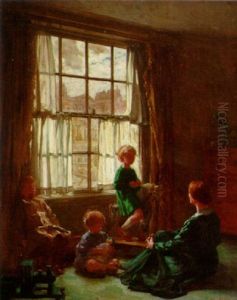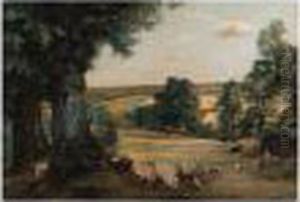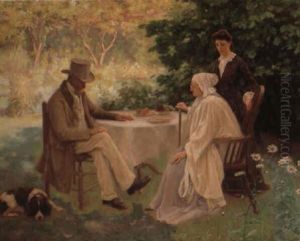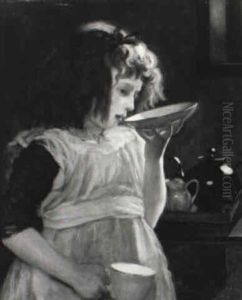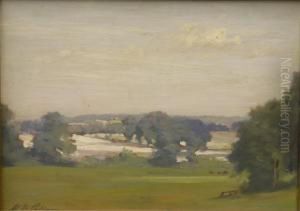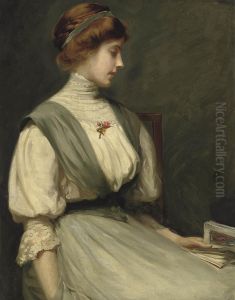William Mainwaring Palin Paintings
William Mainwaring Palin was a British artist born in 1862. He is known for his landscape paintings and watercolors, which capture the essence of the English countryside and its rural settings. Palin's work reflects the influence of the Impressionism movement, with a focus on light and color that vividly brings to life the scenes he depicted.
Palin studied at the South Kensington Art Schools, which later became the Royal College of Art. His education there provided him with a strong foundation in the fine arts, and he was heavily influenced by other landscape painters of the time. Throughout his career, Palin exhibited his works at various institutions, including the Royal Academy and the Royal Institute of Painters in Water Colours.
Over the years, William Mainwaring Palin developed a reputation for his keen observation of nature and his ability to translate it onto canvas. His paintings often feature idyllic landscapes, serene river scenes, and occasionally, coastal views, demonstrating his versatility and command of different environments.
Despite the quality of his work, Palin never gained the same level of fame as some of his contemporaries. Nevertheless, he was respected in art circles and collected by those who appreciated his particular style and the peaceful quality of his landscapes.
During his lifetime, Palin was part of a generation of artists that sought to capture the rapidly changing countryside of Britain in the face of industrialization. His art serves as a historical record of the time, preserving the beauty of the English landscape that was starting to give way to modern development.
William Mainwaring Palin passed away in 1947, leaving behind a body of work that continues to be appreciated by art historians and collectors. His art is part of several collections and can occasionally be seen in exhibitions focusing on British landscape painting of the 19th and early 20th centuries.
